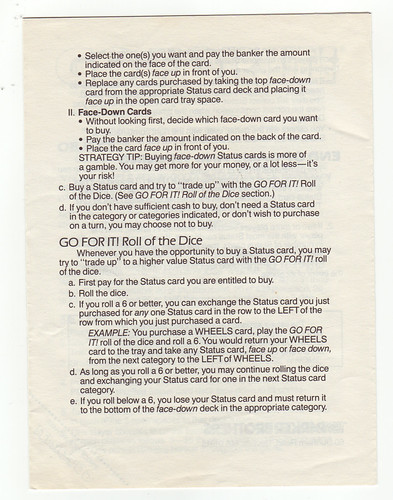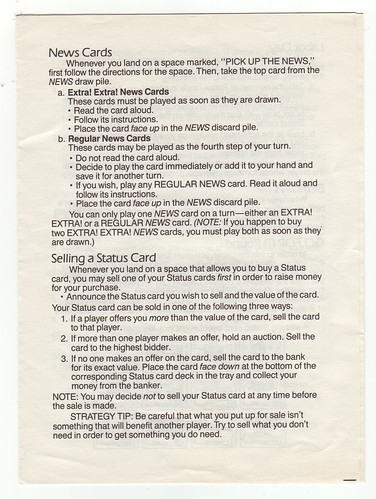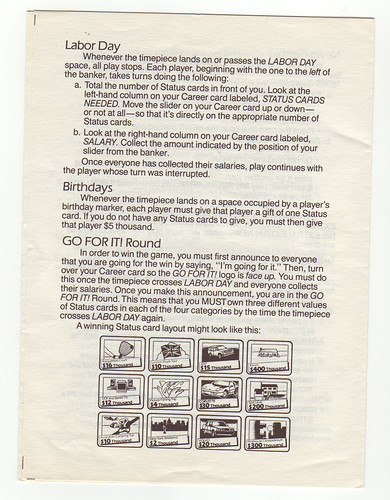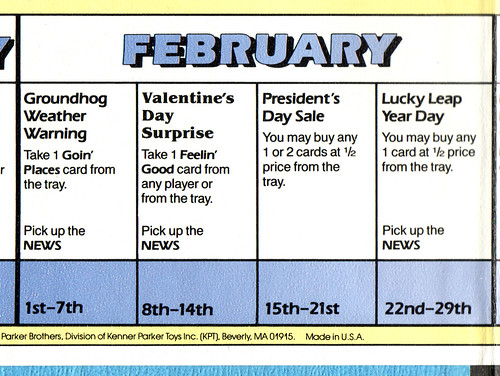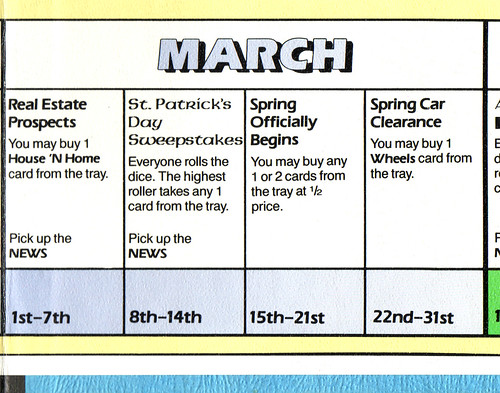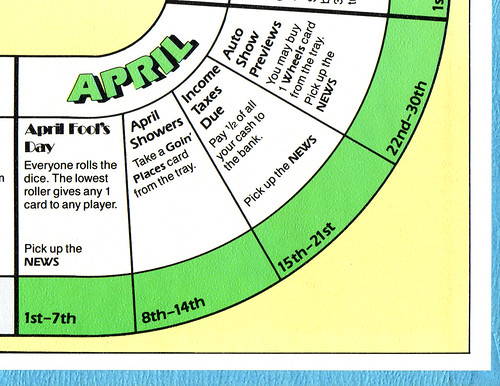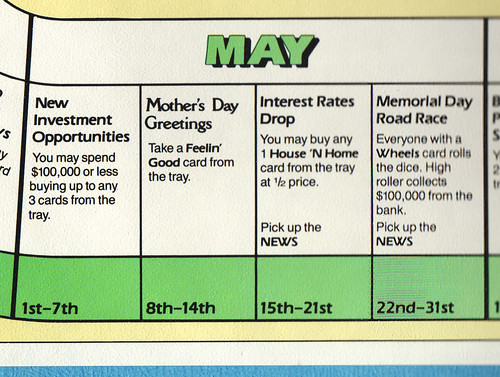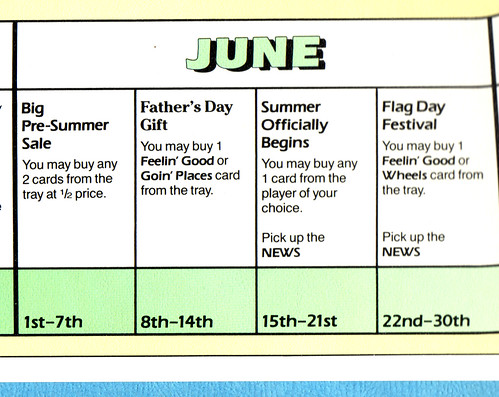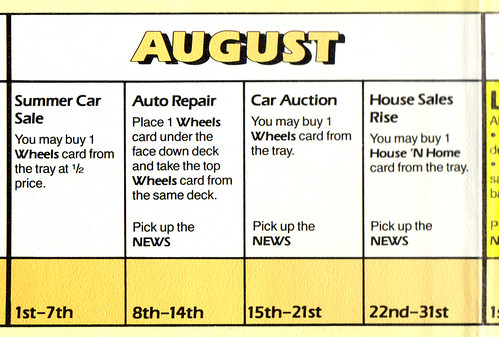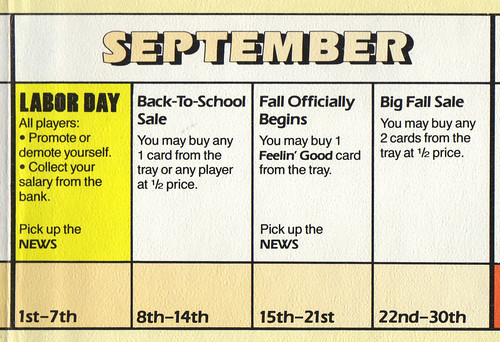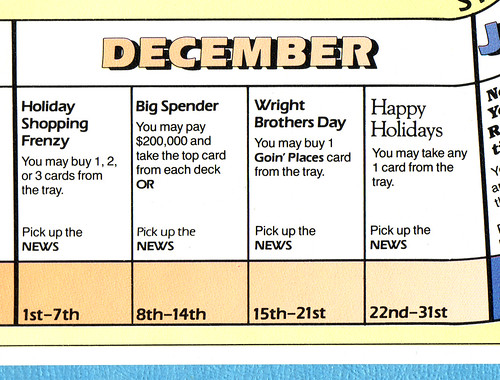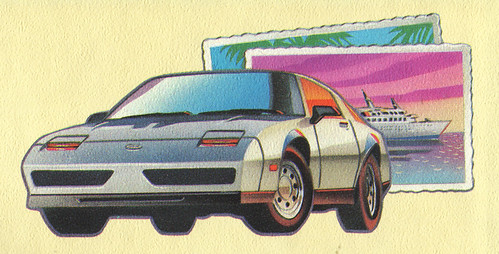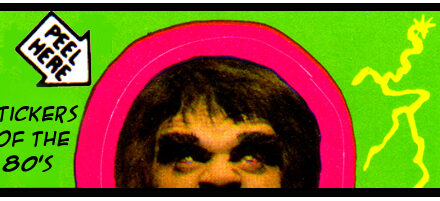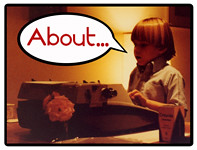Obviously the main reason I began putting this site/blog/podcast (etc) together is my love of mulling over nostalgic memories and all the crap I had/wanted/loved as a kid. Well there is an aspect to this desire that is even more seductive than the nostalgia for stuff I had myself, the memories of things that my friends had that I always loved or wanted. When I think back on my collection of G.I. Joe figures versus the figures that my friends had I get more of a thrill thinking about their figures. Sure, I love my Storm Shadow, Dial Tone and Cobra Eels, yet on the other hand my friend Bryan had Barbecue, Scarlet and Gung Ho, which seem cooler because I never had them.
One of the other things Bryan had that I used to covet was a board game called Go For It, which was released by Parker Brothers in 1986 or so. My family had all of the basic games, Monopoly, Clue, Life and Scrabble, but I always wanted more. I remember back in the day you’d stroll into Toys ‘r’ Us and there would be a virtual wall of board games along one side of the store, floor to ceiling, and all of them were tempting. Risk, Castle Risk, Yatzee, Shoots and Ladders, Candyland, Operation, Trivial Pursuit, not to mention the million and one games based off of popular properties of the day, from M.A.S.K. to Goonies, E.T. to G.I. Joe, there were just so many seductive options. As it was my parents only really broke out the board games around Christmas, in particular on New Year’s Eve when we’d eat shrimp, drink champagne (just a tiny glass for the kids) and play a mammoth game of Monopoly.
So, long story short, every time I’d go over to Bryan’s house and we were trying to decide what to do my answer was always the same, "Lets break out Go For It." Basically it’s the quintessential 80s "gimmie-gimmie, I want more" game of status and collecting stuff, which is basically the yuppie credo, and it’s perfectly captured in the artwork that adorns the box… 
I mean how much more 80s could you get? You’ve got airbrushed silk workout shorts, leg warmers, sweatbands, suburban mansions, wind surfing, solid gold singing, Ferrari driving, tennis playing, executives behind the desk, lush green lawns, and a little bit of Europe just to make things feel a little international. For me this evokes Wimbledon, John McEnroe, Olivia Newton-John getting physical, the Surfing fashion craze, Princess Dianna, hardly working at the office, Magnum P.I., and Life Styles of the Rich and Famous all rolled up into one awesome piece of cover art. If there were only some checkerboard, neon, and a Patrick Nagel painting in the background it would be perfect. 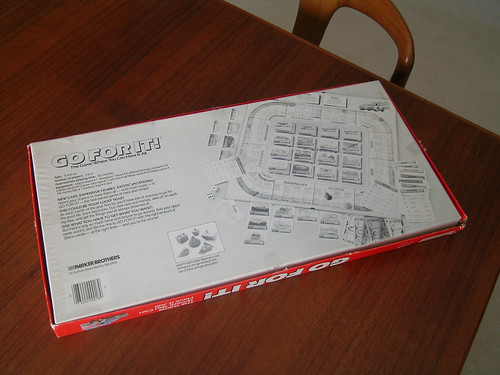
According to the back of the box this is the game where you can have it all by risking what you have to get what you want. How poetic is that. Sure it makes logical sense, but it sure as hell sounds a like sleeping to get to the top to me.
I managed to find a copy on eBay that was both in nice condition (it looked barely played with) and complete with all the pieces. 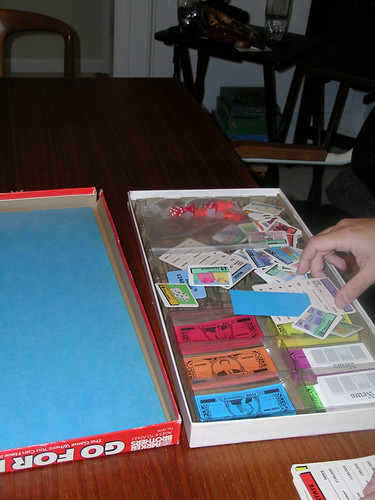
Here’s what the game board looks like when you set it up. The board itself is based on the calendar year with 52 spaces, each representing a week of the year. Each player gets a birthday themed marker that is placed on the board in the spot of their actual birthday and stays there throughout the game. All the players use the same time marker piece to "move" around the board. In the middle there is a tray set up with all the crap you can acquire and then there is a section of the News cards at the top. 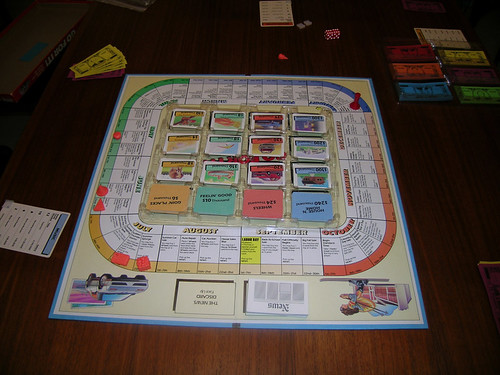
There are also 12 career cards that are shuffled face down and dealt, one to a player. Your career card lists how much you will earn throughout the game, though money is merely a means to an end and doesn’t help you win the game. Each career card has six job levels, each defined by owning between 0 and 12 pieces of status (i.e. the cards that you acquire in the game), and you go up a level as soon as you get enough status. 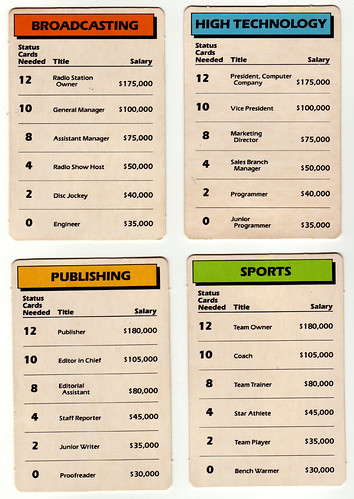
Of the 12 career cards there are 6 different pay tiers ranging between a top pay of $175,000 and $200,000. The two lowest tiers include jobs in Broadcasting, High Technology, Publishing and Sports, which actually seems to be very out-dated, even for the 80s as Bill Gates and Tiger Woods would agree. 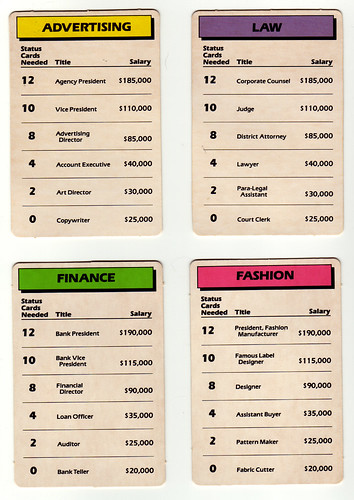
The middle range jobs include Advertising, Law, Finance and Fashion. The pay scales on the jobs is about 50%/50% on accuracy, but as you get into the better paid jobs a weird jump develops between 4 and 8 status cards that is pretty unrealistic, in the beginning you have a $25,000 jump, but by the last set of jobs you’re making a $75,000 dollar leap. 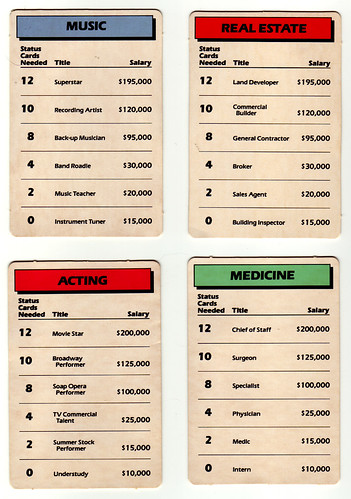
The best set of jobs consists of Music, Real Estate, Acting and Medicine, though the highest position on the best two is only $25,000 different than the lowest, and at the end of the day they are all high paying jobs. No janitors or mail clerks here.
Since a few of my friend’s birthdays were coming up (as well as mine), and because we are all turning 30 this year we decided to get together and have a game day where we veg out to card and board games while overdosing on snacks and novelty soda and beer. I figured it would be a great time to relive the thrill of playing the game and a good opportunity to get some pictures for this review. 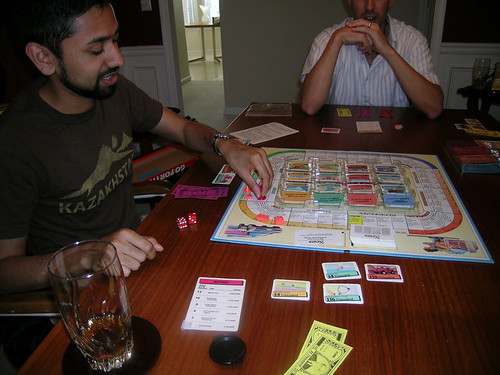
Basically the game goes like this. You start out with like $15,000 and then each player takes a turn rolling the dice, moving the time marker appropriately, and then reading out what is on the space and following the instructions. These spaces determine whether a player is allowed to buy status cards from the tray or other players, and then in particular what types of cards (there are fours different types of status cards, vacations, stuff, cars and homes.) The object of the game is to get a set of 12 cards, three different from each category (and by different I mean each card has to be worth a different amount, so say a $4,000, an $8,000, and a $16,000 set of vacation cards.) As you travel around the board (and throughout the "year") you get paid only once when you pass the Labor Day space. You use the money to buy the status cards and honestly after the first couple of turns around the board you’ll have enough money to purchase mid-size countries in Europe so it’s not a worry. When you feel that you have enough status to win the game you announce that you are "Going For It" when you pass Labor Day (any number of players can do this at the same time) and the game goes into a Clue like sudden death round where you play one more year and based on your prediction and the reality as you pass Labor Day again you’ll either win as you thought, or have to pay a penalty for prematurely blurting out your intentions of being yuppie scum. 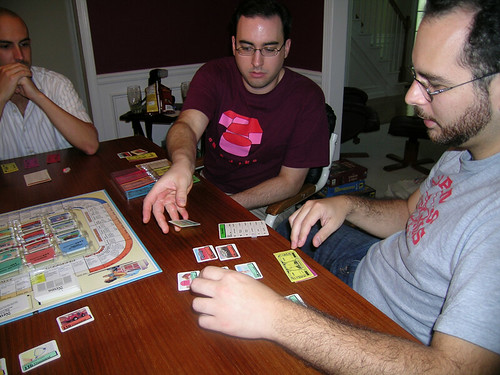
During game play there will be plenty of status swapping and stealing as well as plenty of ups and downs, most of which won’t have anything to do with your money. There are special "News" cards that spaces will instruct you to pick up and play that mostly reward (with discounts on status or free status) and rarely punish the players (I mean we’re in this for greed, but un checked and only rewarding greed.) There’s also the whole birthday marker thing. Whenever a space is landed on that has a birthday marker, all the players must give one status card (or in the event they don’t have one money) to the player whose birthday it is. So there is always status flying across the table. There’s also an option to trade up any purchased status card by "Going For It" (see the theme yet?) where the player gambles the status card by rolling the dice, a 5 or lower and the card is lost, but with a 6 or greater you can trade the card in for one of greater value in the next column. 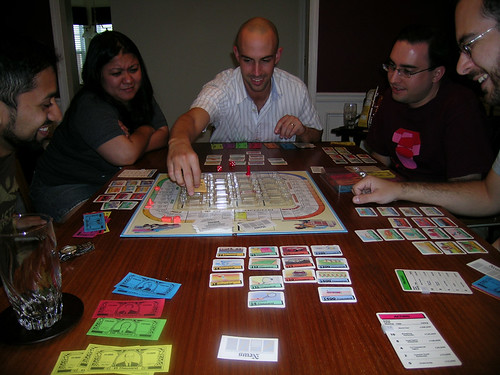
One of the things that I remembered the most about this game was the birthday markers, which were more or less birthday themed. There’s a cupcake, a birthday hat, an ice cream cone, a present, a cake and, um, a slice of pizza? Yes, I guess the game designer (Charles Phillips, who also brought us Advance to Boardwalk, Free Parking and Castle Risk) was a big fan of hitting Chuck E. Cheese or Showbiz on his birthday. 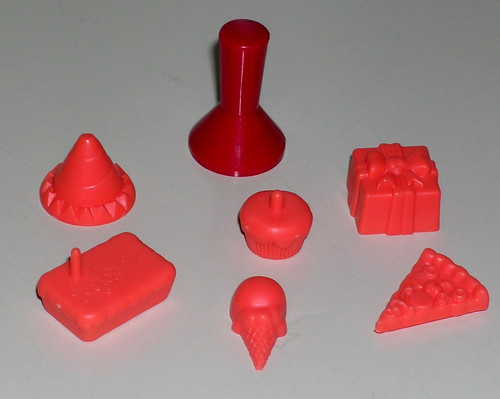
My favorite part of the game though, is of course the status cards. Even though I was only 9 when I was playing it there was something addictive about the idea of collecting trips to the Australian Outback, Pontiacs and $400,000 townhouses. Like I stated above there were four categories of crap you could get… 
…my favorite of which was the Goin’ Places cards. My goal each time I played was to get that Australian camping trip because I wanted to bag a koala to take home with me. This, of course, was followed by the Orient Cruise because I liked the splash of colors. I never wanted the Florida fishing trip because I lived in Florida at the time and it just seemed like a waste of money. The airbrushed art isn’t quite as cool in these cards as it is on the box cover, but it’s still pretty nifty. 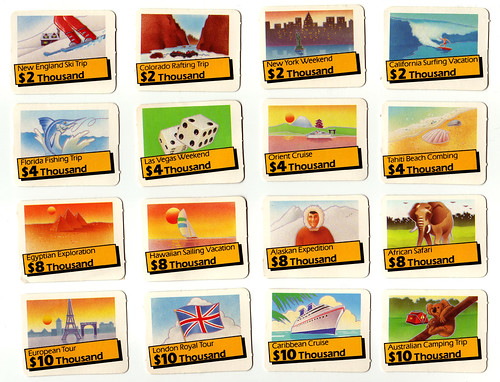
It’s with the Feelin’ Good status cards that you really get an 80s feel to the game, what with the $12,000 TV and VCR systems (did it ever cost that much, even for the best of the best?), leg warmers on the gym membership (if I ever paid $8,000 for a gym membership I think I’d kill myself), and a sweet new pastel wardrobe. Life is good. 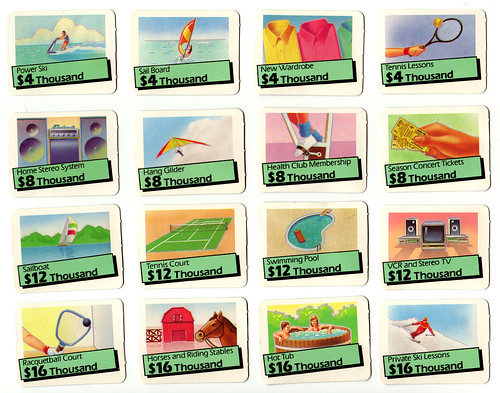
Looking back, I’m slightly disappointed wit the Wheels status cards as it really doesn’t quite capture that 80s car feel. Sure all of these cars scream the 80s (boxy Volkswagens, nondescript sedans, and Corvettes) but where are the true luxury cars? Where are the Ferraris, Lamborghinis, and Porches? Where are the BMWs? Where’s my damn DeLorean?!? Sure the ’57 Chevy was pretty big in the 80s what with Christine, Eddie and Cruisers and the rest of the weird 50s nostalgia that hit hard in the decade, but $30,000? I doubt it. It is kind of cool that there aren’t like 600 SUVs here, just the one Jeep which is all I really remember in the 80s anyway. 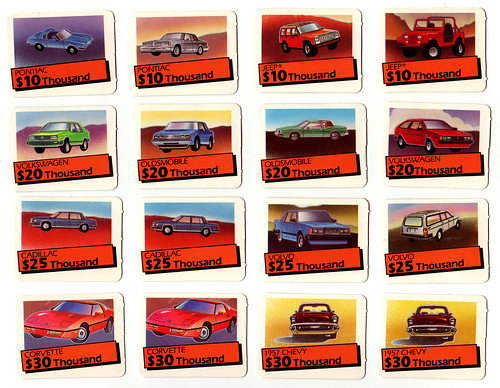
With the House ‘n Home status cards, even as a kid I knew there had to be something fishy about the $400,000 houses. A Ranch for $400,000? It better be made of solid gold. 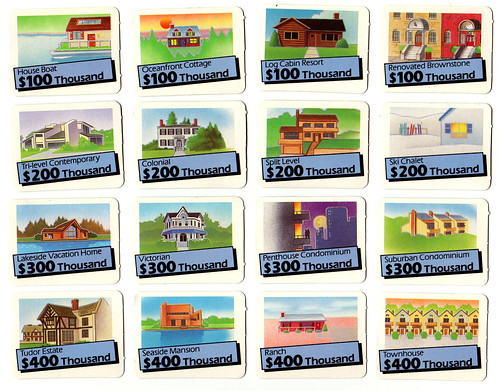
Anyway, the game play is pretty balanced and when you get used to the idea of collecting status cards instead of cash it actually becomes kind of fun, especially in a dated ironic way. I’m glad I got a chance to play it again after 21 years, and now that I own it hopefully I’ll be able to bust it out more often. Here are some scans of the rest of the game pieces, the money, News cards, the board broken up by month and the instructions as well as a couple more pieces of swell airbrushed 80s consumerist art. News Cards 




